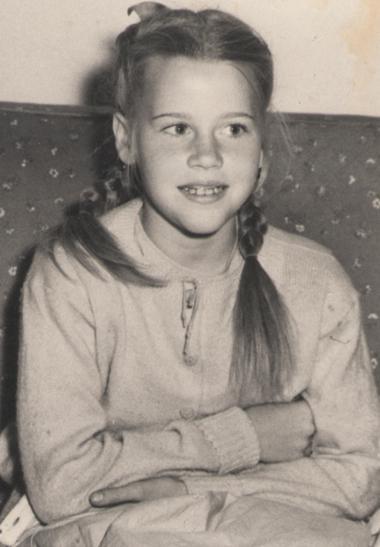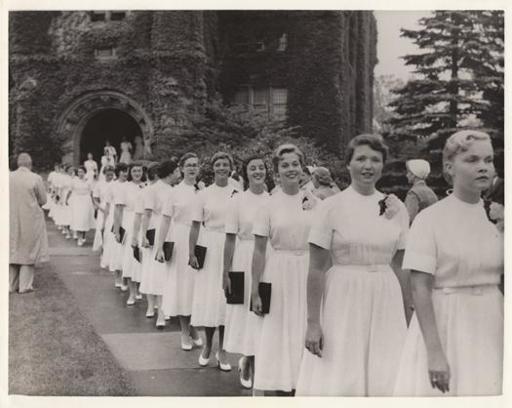Prime Time (9 page)
Authors: Jane Fonda
Tags: #Aging, #Gerontology, #Motion Picture Actors and Actresses - United States, #Social Science, #Rejuvenation, #Aging - Prevention, #Aging - Psychological Aspects, #Motion Picture Actors and Actresses, #General, #Personal Memoirs, #Jane - Health, #Self-Help, #Biography & Autobiography, #Personal Growth, #Fonda

Doing a life review can allow us to discover a different reality lurking within those already-lived years. What exquisite freedom this could give us if it allowed us to rearrange our attitudes about our experiences and the people in our lives—the freedom to choose the
meaning
of our experiences.
Developing New Neural Pathways
If we can learn to assign new meanings to stressful situations, we can actually avoid the biochemical and hormonal reactions that cause damage to our systems, especially with age. Recent cognitive research shows that our ability to change our attitudes and behaviors manifests neurologically, as well. Our brains retain their plasticity well into our Third Acts, and they can be rewired. When we react to a person or the memory of a person or event in a negative way over and over and over, it becomes woven into the fabric of our brain’s neural network, like a well-worn footpath that grows deeper over time. The footpaths are not structural; they are patterns made by electrical and chemical signals that are sent via neurotransmitters to parts of the brain’s hundreds of billions of cells, or neurons; the neurons get into the habit of interacting in certain patterns. But when we change our reactions through new insight, experiences, cognitive therapy, or mediation, no matter how old we are, a neural-pathway shift can occur; the signals can change direction. If we can manage to maintain the new, positive interpretation of the person or event, this new pathway will win out over the formerly hardwired memory. We may not be able to change what happened, but we can change our feelings about it. This is humankind’s ultimate freedom!
The possibility of treading new neural pathways through the landscape of the past is in itself a worthwhile endeavor as a way to grow, to develop your character, to become whole. What a potentially precious gift doing a life review can be, for ourselves! And, perhaps, for our relatives and children (should we choose to write it down and show it to them): not writing a history for the purpose of impressing or pleasing or reassuring, but to tell our own real story. Our truth may help set our children free. And it will surely help us shape a strong Third Act, one built on a foundation of truth—about who we are and have, actually, always been.
CHAPTER 3
Act I: A Time for Gathering
We shall not cease from exploration
And the end of all our exploring
Will be to arrive where we started
And know the place for the first time.
—T. S. ELIOT,
Four Quartets
I must have been about eight years old here.
T
HE FIRST ACT OF OUR LIVES, AS I SEE IT, BEGINS AT BIRTH AND lasts for twenty-nine years. Originally, I called the First Act “Gathering” because it is the stage when we gather together the ingredients—the tools, the skills, the scars—that make us uniquely
us,
the elements we will spend Acts II and III recovering from but also building on. In terms of the passage above from T. S. Eliot’s
Four Quartets,
Act I is the “place” we come back to after all our exploring, and, because we are laden with experience and perhaps forgiveness and wisdom, we see it and understand it for the first time. This is why it is important, in a life review, to visualize and reflect on who we were back then and what that can teach us about who we are now and what we want to focus on going forward. Often, by doing so, we can make our present life better.
Unhappy Childhoods Can Fade Away
Interestingly, I discovered research that indicates that whether our childhoods were happy or miserable is not all that important in later life. Dr. George Vaillant, a psychiatrist and researcher, is the director of the thirty-year-long Harvard Study of Adult Development, one of the most important studies ever done about aging and why people either thrive or fail to. In his book about the study,
Aging Well,
Dr. Vaillant, talking about the men in the study (although women were also participants), says, “Unhappy childhoods become less important with time. When the lives of the men whose childhoods were most bleak … were contrasted with men whose childhoods were the most sunny … the influence on college adjustment was very important. By early midlife, childhood was still significantly important, but by old age the warmth of childhood was statistically unimportant. A warm childhood, like a rich father, tended to inoculate the men against future pain, but a bleak childhood—such as with a poverty-stricken father—did not condemn either the Harvard or the Inner City men to misery.”
1
The Young Brain
One thing scientists know for sure: at birth, babies’ brains have around twenty-five hundred synapses, or points of connection between the neurons that receive and send signals. These continue to multiply during the very early years, and until recently, it was believed that this increase in synapses happened only once—in childhood. Not true! Brain scientists now know that there is a second surge right before adolescence that lasts into the late twenties.
Think about it: Whether you are a boy or a girl, you have all these high-octane hormones flooding through you, but the prefrontal cortex, the part of the brain that will allow you to avoid risks, determine appropriate behavior, decide on priorities, and understand the consequences of your actions is still under construction!
“The skills you practice as a child and pre-teen become much sharper in the teenage years; and those practiced reluctantly, if at all, will diminish on your brain’s hard-disk drive,” writes Judith Newman, an author and columnist.
2
In other words, when it comes to brain neurons, early on we need to use them or lose them!
Education
This aspect of neural development is the likely reason that education is one of the key ingredients of Act I, an ingredient we need to have gathered when our brain circuitry is being established. Early education is particularly critical in determining cognitive function in old age—at least in Western cultures.
Many important studies show that lifelong learning is one element found in happy, healthy older people. It has even been shown that for every added year of education you receive, your life is likely to last more than a year longer! In her book
A Long Bright Future,
Dr. Laura Carstensen, the founding director of the Stanford Center on Longevity, says, “Although income level and occupational status are influential, when push comes to shove, I think most social scientists would put their money on education as the most important factor in ensuring longer lives.”
3
Dr. Carstensen goes on to explain that educated people have better jobs, earn more money, live in safer neighborhoods, lead healthier lives with less stress, and manage their health care better when they do get sick. It may be too late to do much about your education in the developmental sense, but other studies show that learning new things at any age affects one’s brain synapses and has a positive health impact. We can try to keep learning, and we can ensure that younger people—our grandchildren, perhaps—receive a good education. Do you think you might want to go back and study some more? Lots of people of all ages are doing so these days, and schools are making it more convenient for us.
Gender Identity
Another central factor in Act I involves how we have internalized our gender identity—what goes into being a girl or a boy. This is more culturally determined than we realize. As the spiritual leader and philosopher Krishnamurti once said, “You think you are thinking your thoughts, you are not; you are thinking the culture’s thoughts.” When it comes to gender distinctions, early on the culture’s thoughts profoundly determine who we become. Starting in Act I, boys and girls internalize messages about gender and society’s expectations. If we do not become conscious of these unspoken communications and thus do not address them, they continue to determine our thoughts and behaviors throughout our whole lives, in ways that can rob us of our full humanity. One’s gender identity may be a key aspect of Act I, the area where we can sustain the deepest wounds during this stage of gathering.
Me, third in line, at my high school graduation. I designed the dresses we all wore.
GIRLS
When you do a life review, think about your adolescence. What was it like, in gender terms? What scenes do you remember? What were you like? What was your mother like? Your aunts? What role models did you have? How did your father and mother respond to your changes and development during puberty?
Doing my life review, I realized the extent to which I changed when I entered adolescence. For me it began to happen around age twelve, when boys entered the picture and my father began to insinuate that I was fat. Prior to that, I had been a tomboy and what had mattered to me about my body was that I was strong and limber and brave enough to climb high trees and wrestle with my boy friends. Once it was expected that the boy friends would become boyfriends, the emphasis shifted to fitting in, being popular, looking right, staying thin. This is when I became disembodied—I can feel it now, in retrospect. I moved out of myself and took up residence next door. The most authentic parts of me took a backseat to the girl (and then the woman) who tried—at least on the surface—to become whatever I thought the boy (or man) I was with wanted. I was beginning my Third Act before I felt I had recovered from this Act I conditioning. This phenomenon, by the way, is not unique to me … far from it.
Taken at my high school graduation.
Because of my work with adolescents, I have studied the ways in which this stage of gender-identity development in Act I is different for girls than it is for boys. For many girls, especially Caucasian girls, adolescence is when they try to hide what they know and feel; the code says, “Don’t be too strong, too outspoken, too sexual, too aggressive.”
A perfect example of this was related to me by Catherine Steiner-Adair, an instructor at Harvard’s Department of Psychiatry and the former director of Eating Disorders Education and Prevention at the Klarman Eating Disorders Center. “I was doing research in a middle school,” she said. “Sometimes I’d invite the students out for pizza. When I would ask the girls what they wanted on their pizzas, the ten-year-olds would want double cheese with pepperoni, the thirteen-year-olds would say, ‘I don’t know,’ and the fifteen-year-olds would answer, ‘Whatever you want.’ ” In other words, girls lose their relationship with themselves and what they want in order to fit in and to be in a relationship, especially with a boy. Asking for double cheese and pepperoni might make them look like they’re pigging out or not “feminine” enough.


